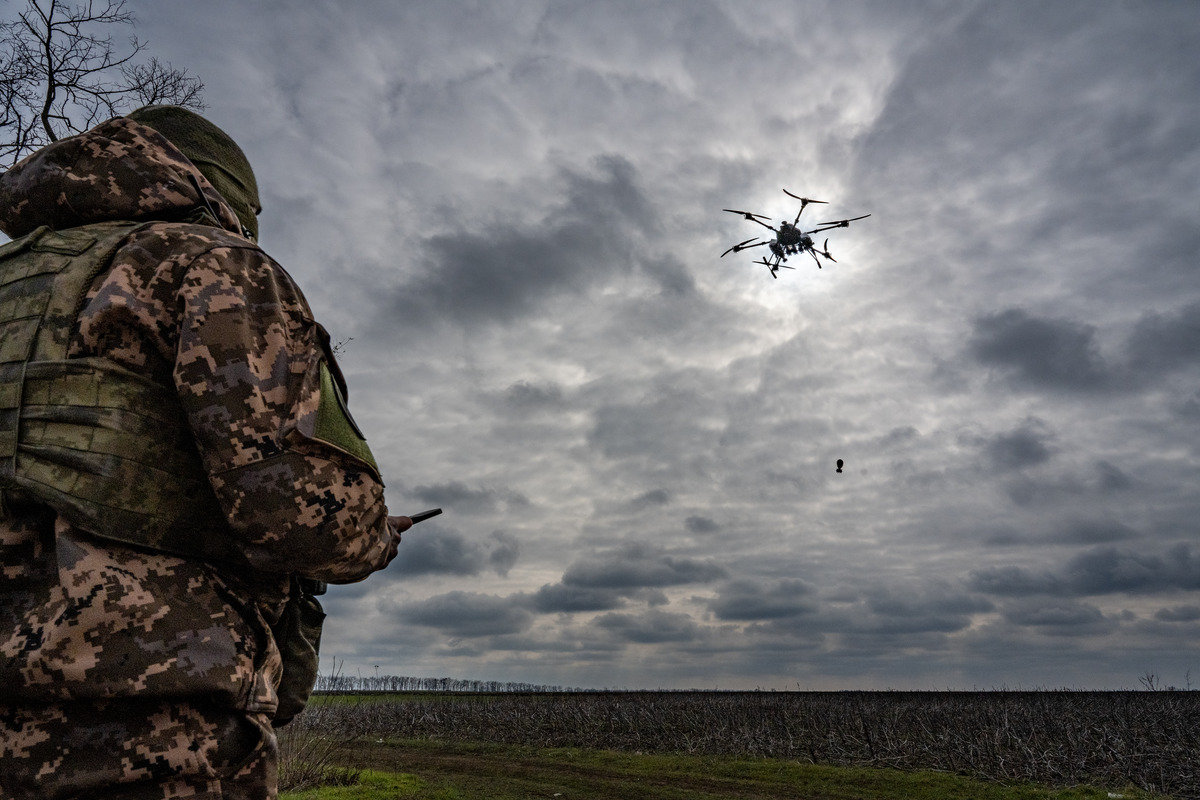
British soldiers have successfully trialed a new radio frequency directed energy weapon (RFDEW) designed to take out incoming attacks involving large numbers of drones, the U.K. government has said.
Why It Matters
The world has watched on as the rapid pace of drone development quickly came to define the war in Ukraine, changing how modern militaries would fight wars going forward.
As drone technologies matures, so too do counter-drone systems and techniques designed to knock uncrewed aerial vehicles (UAVs) from the skies.
Swarming tactics involve using a large number of drones to overwhelm a target’s defenses. Drone pilots are still getting used to this type of attack—which is difficult to pull off—but it is likely to become more and more common. British intelligence has evaluated that Ukraine came up against more than 18,000 attacking drones in 2024.
Scott Peterson/Getty Images
Expensive air defense missiles cannot constantly defend against cheap, mass drone attacks, meaning other options that are cheaper to operate are increasingly appealing.
What To Know
The U.K.’s Ministry of Defence said British soldiers had used an “invisible radio-wave weapon” to knock out swarms of drones for the first time.
A type of directed energy weapon, high frequency radio waves wreak havoc on the critical parts of a drone, making the UAVs malfunction or career off course and crash, London said.
Many militaries are heavily investing in directed energy weapons, which use radio frequency energy or lasers to take out incoming threats, although the technology is mostly designed to eliminate drones.
The British government has invested more than $53 million into RFDEWs so far, according to the country’s defense ministry. Its weapon was developed by a group of defense companies led by the British arm of French defense giant Thales.
The British government said in December that it had successfully tested the weapon for the first time. The latest test was the first against multiple targets.
Soldiers trialed the technology out on a weapons range in western Wales as part of “the largest counter-drone swarm exercise” the British Army has ever done, the ministry said on Wednesday. The weapon proved itself “capable of neutralising multiple targets simultaneously with near-instant effect,” the government added.
RFDEWs can take out targets up to 1 kilometer (just over half a mile) away, even when electronic warfare doesn’t work on the incoming threat, London said.
Electronic warfare, including jamming a drone’s navigation systems or spoofing—when the location data is false—has become a major obstacle to drone pilots close to front-line clashes in eastern Ukraine or operating longer-range uncrewed systems.
Directed energy weapons are limited by range, and sometimes by weather conditions. The U.K. is developing a laser-directed energy weapon dubbed DragonFire, which can be used on targets within line of sight.
London has previously said the DragonFire costs just over $13 a shot once up and running. The RFDEW could come with a price tag of as little as 10p ($0.13) per shot, the defense ministry said.
While directed energy weapons come with nearly unlimited magazines, they have very high initial costs before the systems are up and running.
What People Are Saying
Maria Eagle, the U.K. Minister for Defence Procurement and Industry, said in a statement: “This significant experiment exemplifies the strength of British innovation – driven by our home-grown industry, technology firms and scientific talent.”
A British Army soldier named as Sergeant Mayers from the 106 Regiment Royal Artillery, who was the first British soldier to take down drones using a radio frequency directed energy weapon, described the technology as “an exciting concept.”
What Happens Next
Work will continue on the directed energy weapon, which could focus on improving its range and power, Sergeant Mayers said.
